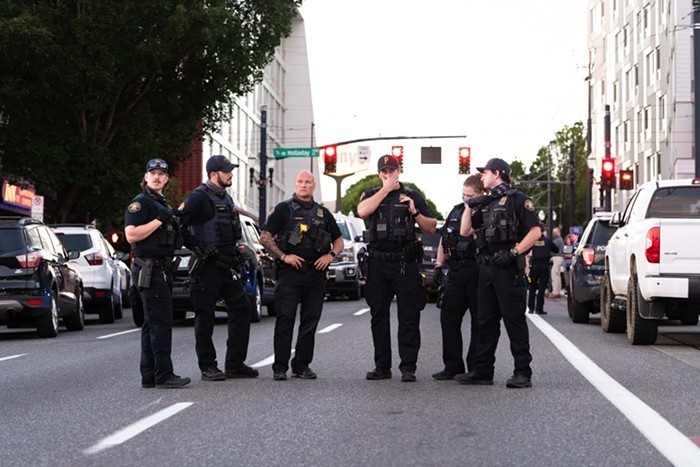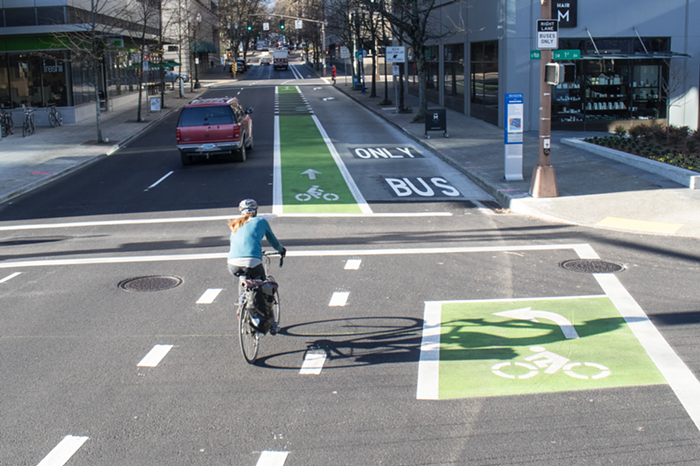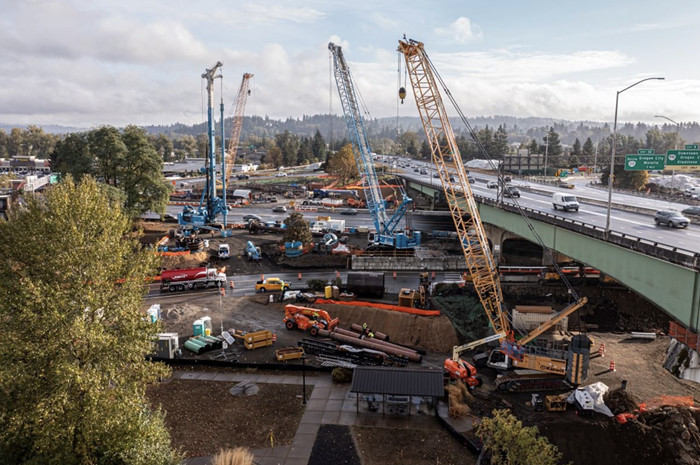Gallery 500, 420 SW Washington, through March 31
The medium of film has come to define our idea of narrative in art. Beginnings, middles and ends unfold with predictable pacing and perfectly timed orchestral crescendos. Still images flash faster than our eyes process them, simulating movement, emotion and violence in real time. As Goddard put it, film is "truth at 24 frames per second."
But sometimes we don't need the whole truth. Sometimes we just need the one frame, suspending movement and leaving an implied, mysterious narrative for the viewer to decipher for herself. The large format photography of the Sanchez Brothers is a perfect example. The work of these two young Montreal natives has often been called cinematic, but its real attraction lies in its opposition to this world. Their characters are not developed and their settings are not explored with panning shots or rapid montages. Instead, their photographs capture specific moments. Like Bloody Bed, a violent still life with feet protruding up from the floor on a bedspread covered in a sheet of blood. The room itself raises questions, with its retro-modernist wallpaper and thrift store paintings, but what about the body? Was it a lover's tryst, or perhaps a suicide? Unlike a movie, the answer doesn't wait in the next scene.
Some of the photographs reveal a more psychological intrigue. In Eight Years Old, a boy sits up in his bed surrounded by toys and gadgets, the dark night just visible through his half-drawn window shade. He seems to have everything a boy would want to be happy, but he hugs his knees up to his chest and carries a melancholy expression beyond his years. The door to his room is half open and yellow light from the hallway seeps in. Are his parents fighting in the other room? Or is he just pissed because he doesn't have a PlayStation 2 next to his bed?
The Sanchezs set a mood in their photographs, utilizing lighting and color schemes, constructing elaborate sets, even scouting locations and casting just the right actors to play the part. All the details and planning produce one artifact--the photograph--which the viewer must use to create her own script, to write her own beginning, middle, and end.












